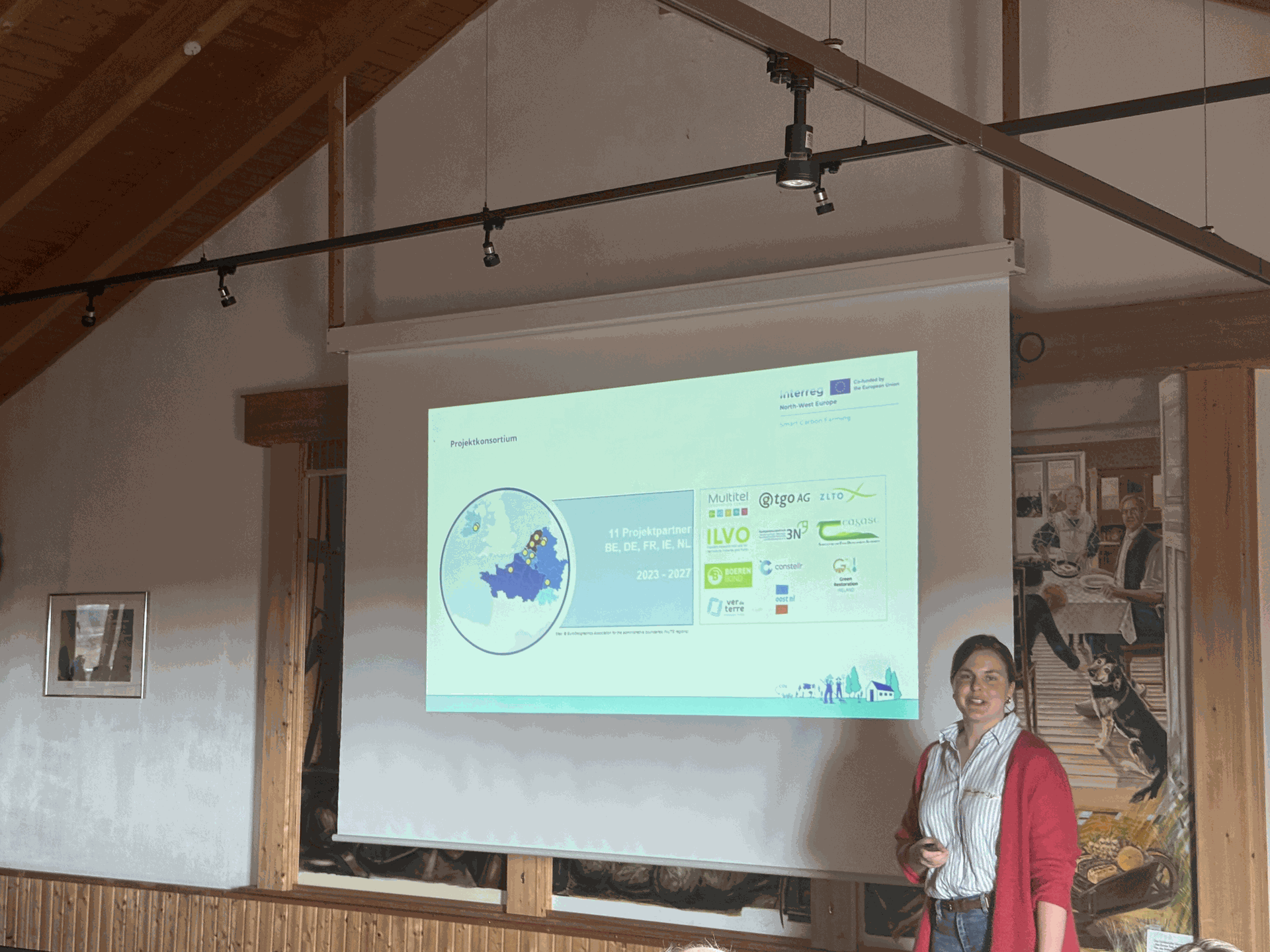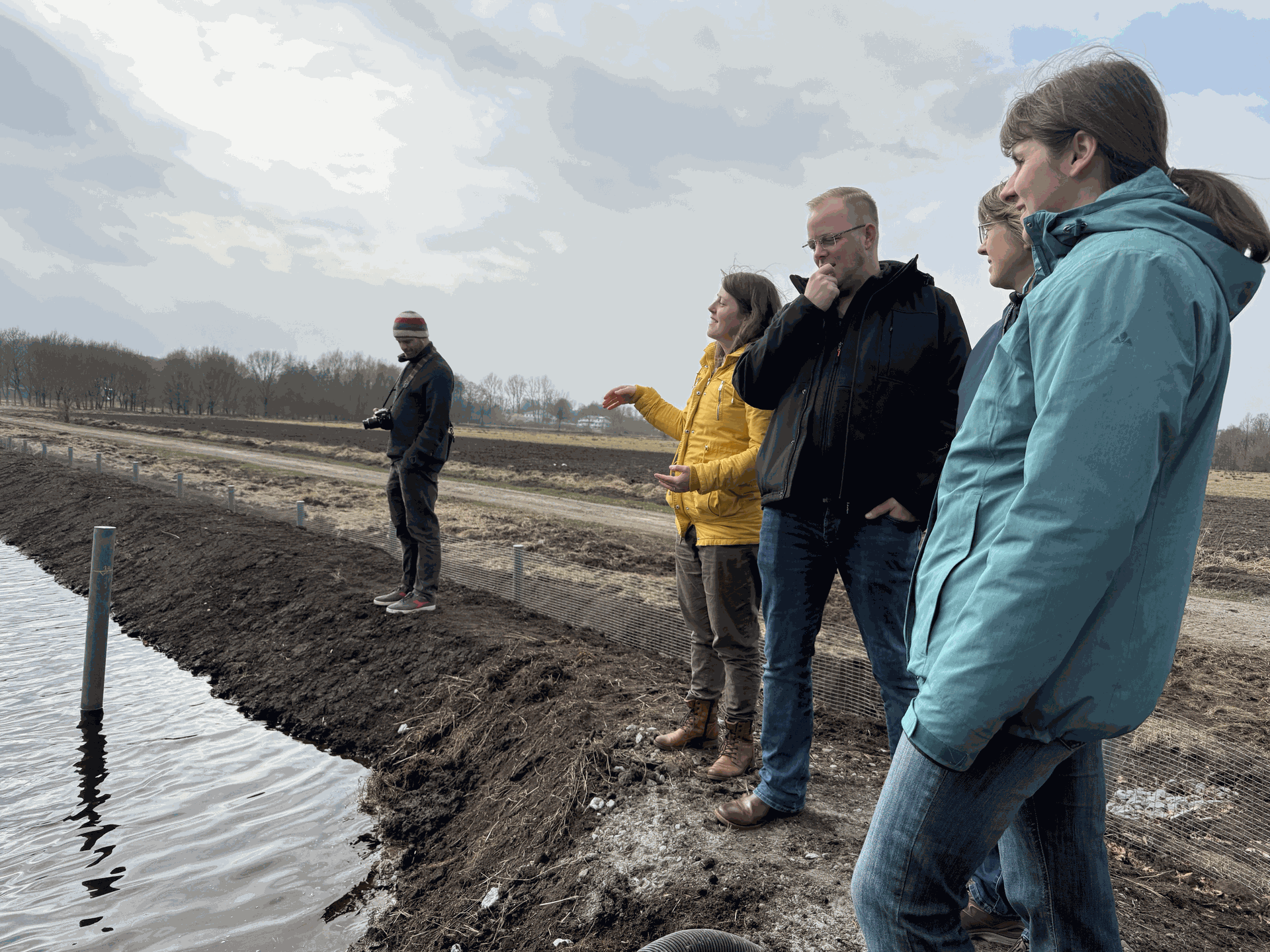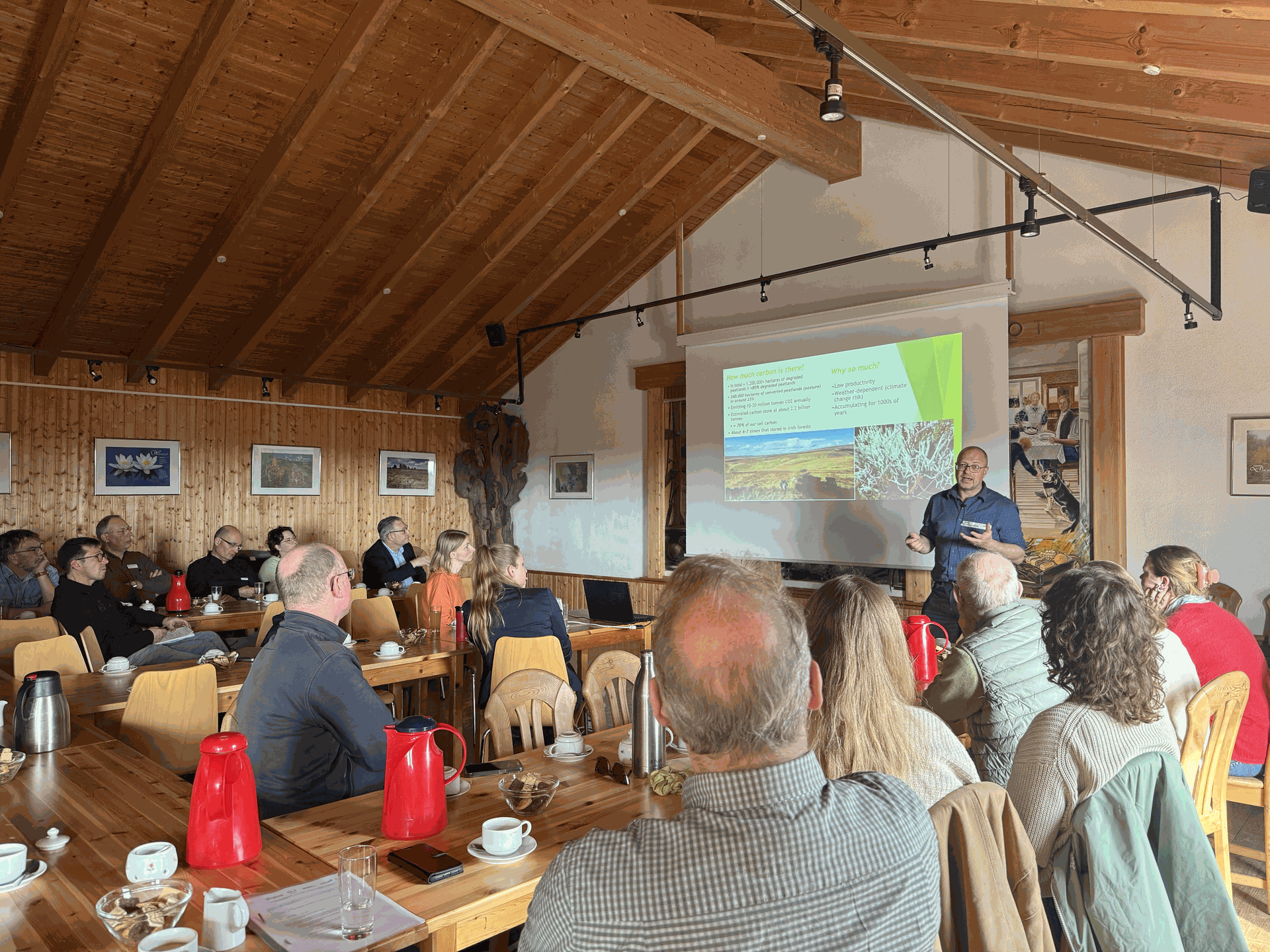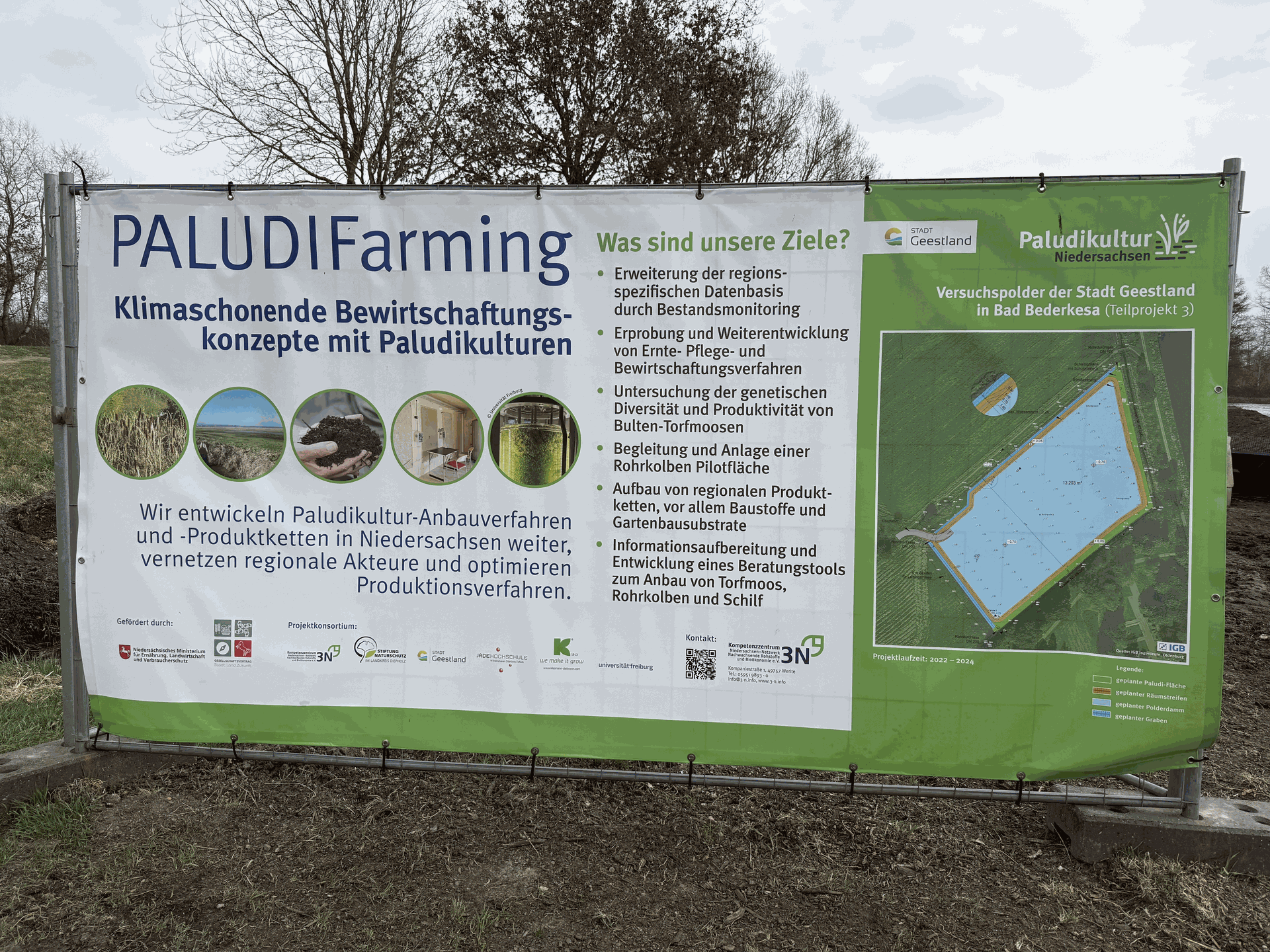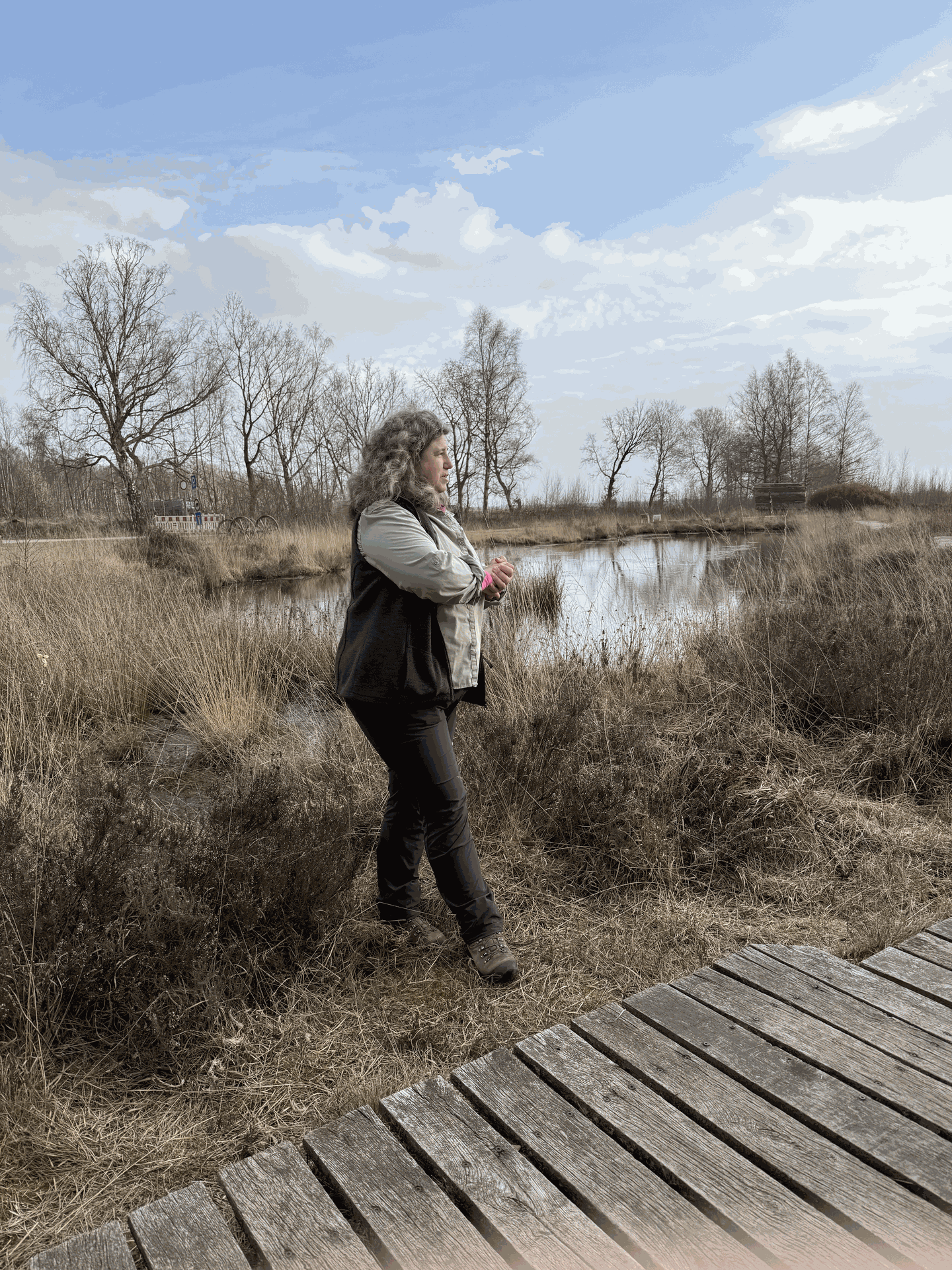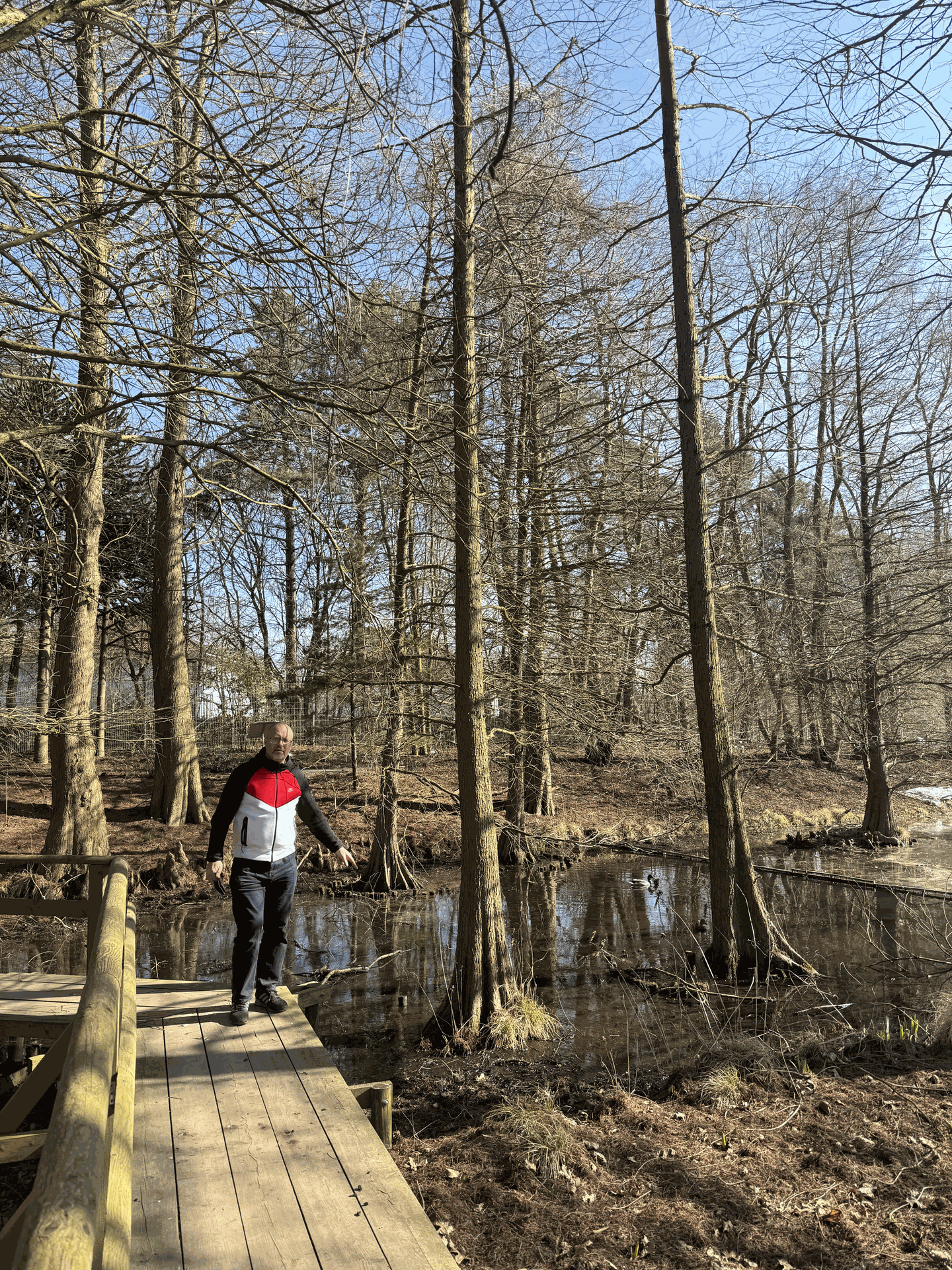In late March, Smart Carbon Farming partners Bernhard Aumann of The Good Ones (TGO) and Doug McMillan of Green Restoration Ireland (GRI) took a week-long tour through Lower Saxony, Germany. On a mission to deepen cross-border collaboration on peatland restoration and carbon farming, they explored how sustainable land management can unlock carbon storage, biodiversity gains, and new revenue models for landowners.
The Peatland Challenge
Peatlands in Lower Saxony are in critical condition. Decades of drainage for agriculture have led to severe environmental degradation and rising emissions from oxidising peat soils. For Doug, the solution lies in paludiculture - the cultivation of crops on rewetted peatlands. Without it, restoration just isn’t viable, he noted during site visits. The team emphasised that engaging nearby landowners is essential to enable large-scale rewetting and ecological recovery.
Learning from the Land
Throughout the tour, partners shared practical techniques and real-world insights. At several rewetted sites, including the Naturschutzstiftung Cuxhaven’s Moosprojekt, Doug explained the technique of blocking drains to control water levels in agricultural fields and retain water in deep peat areas. He described how this enables farmers to cultivate crops without extensive changes to their lands, as crops like blueberries and chokeberries thrive in high water tables. This approach allows productive farming to coexist with climate goals.
Bringing Carbon Farming Conversations to the Community
A key event of the week was hosted by TGO AG at Goldenstädter Moor. Bringing together stakeholders from TGO, 3N, Green Restoration Ireland, the Chamber of Agriculture, and nature NGOs, the event featured presentations on the Smart Carbon Farming project and Irish peatland projects. A panel discussion explored the evolving EU policy landscape and how carbon farming could be implemented on the ground. Earlier that day, a visit to a TGO client landowner initiated discussions about voluntary conservation and the potential for carbon credit monetisation on rewettable land.
Scaling the Solutions
To scale peatland restoration and carbon farming, several enabling conditions must be met. First, there is a pressing need to raise awareness about the practical solutions already available for rewetting and productive land use. Many landowners remain unaware that crops like berries and timber can thrive on wet peat soils.
Equally important is the development of financial incentives. Combining carbon payments with income from paludiculture can create viable business models for farmers and landowners. Moreover, stronger support from policymakers will be essential. Clearer guidance, long-term policy signals, and alignment across regulatory frameworks can provide the confidence stakeholders need to invest in these transitions.
Exploring Innovation and Exchange
The tour also included visits to 3N’s Paludiculture Competence Centre and the Living Lab Teufelsmoor, where Smart Carbon Farming partners presented decentralised carbon farming models and discussed value chains for paludiculture crops. At Agroforst, the team explored "peatforests" - a promising combination of commercial timber and wetland conservation. These paludi showrooms showcase real-life, powerful proof that fruits, herbs, grains, wood, and more can thrive on rewetted bogs.
Throughout the tour, Smart Carbon Farming partners shared not only methods, but a mindset: one that sees restoration as a form of innovation and agriculture as a climate solution.
As the project moves forward, the insights gathered in Lower Saxony will inform new approaches to policy, land management, and investment that make carbon farming viable, not just for the climate, but for the farmers who steward the land.
